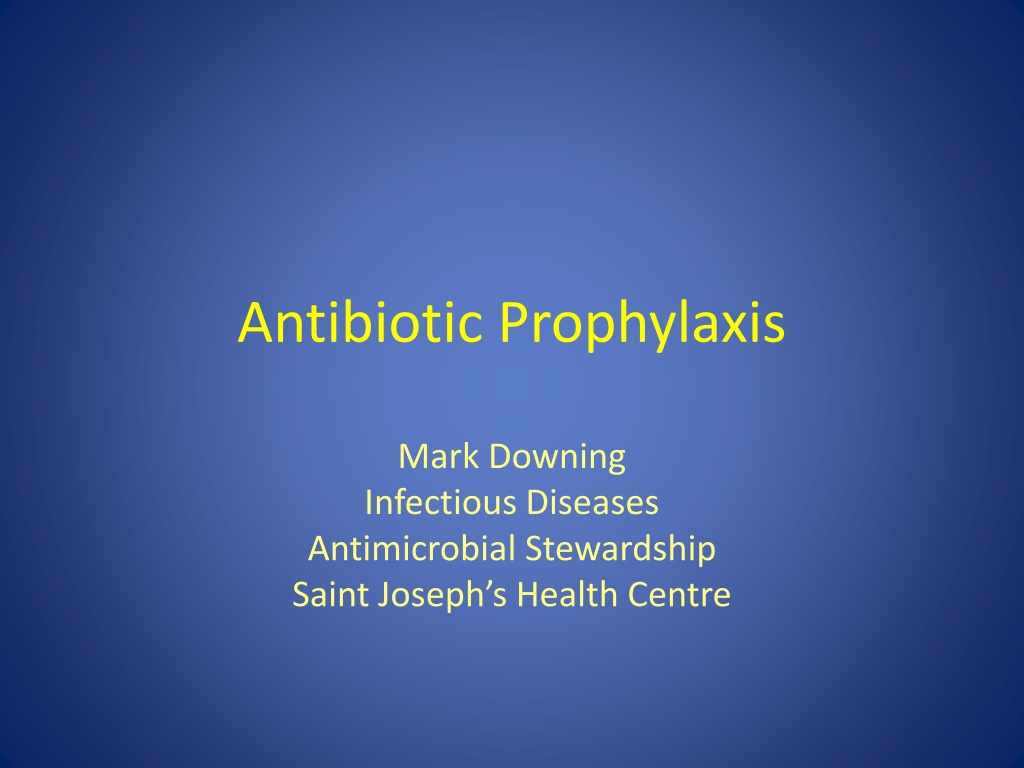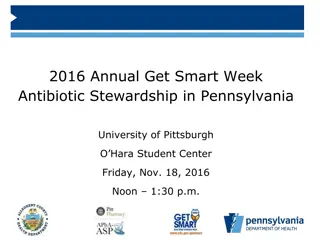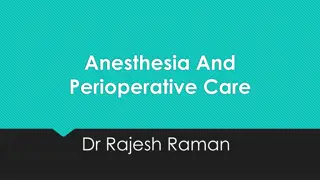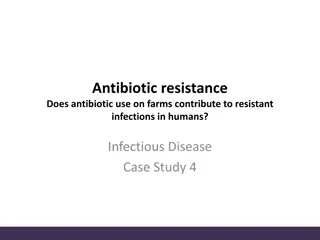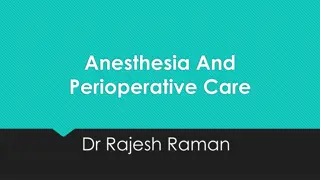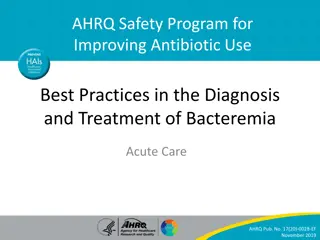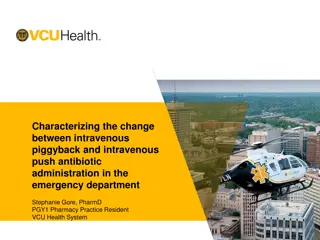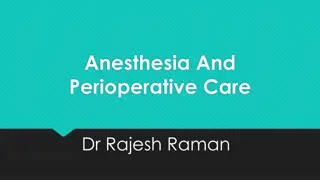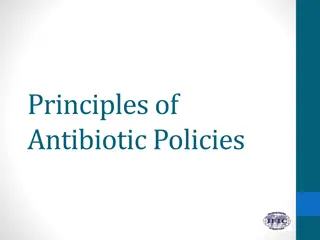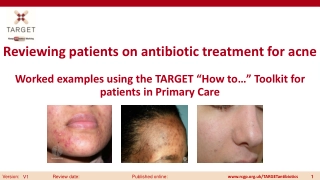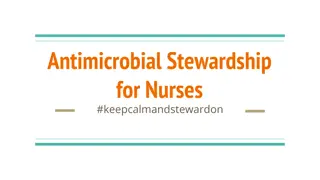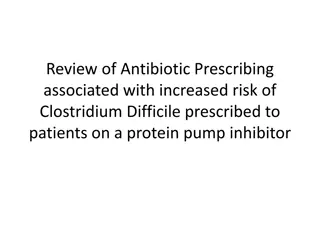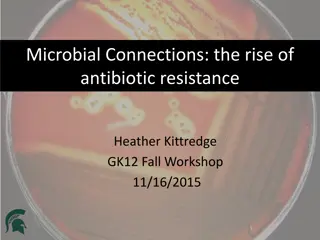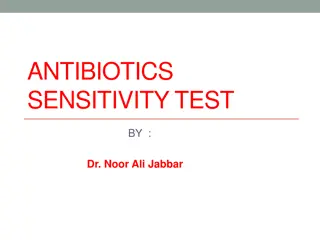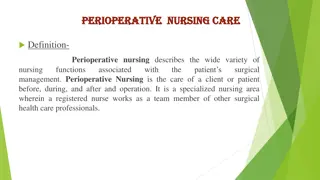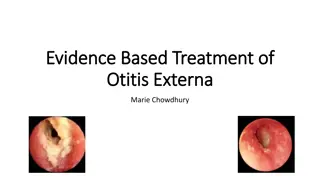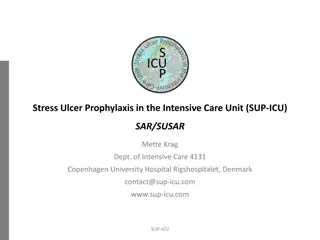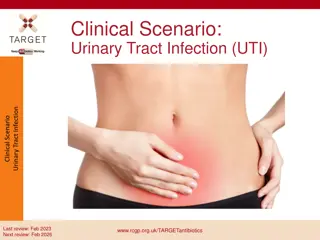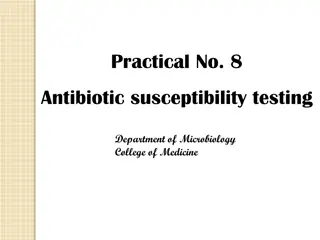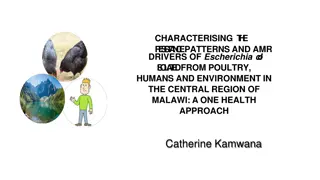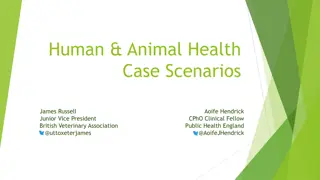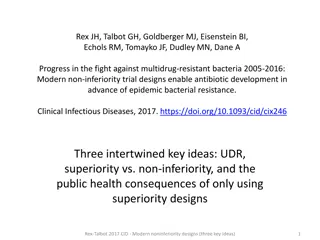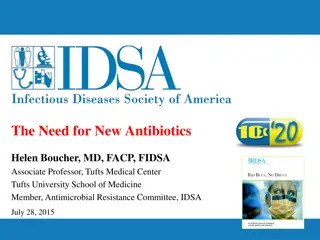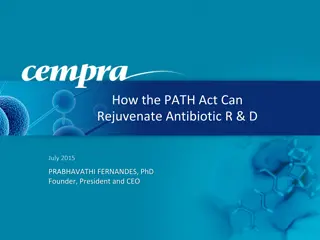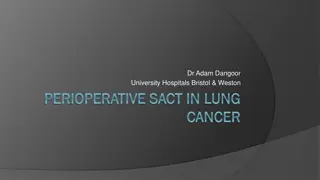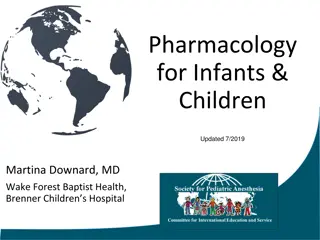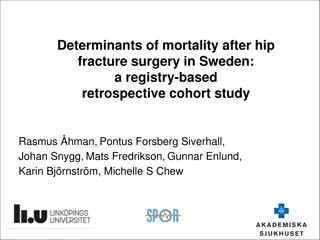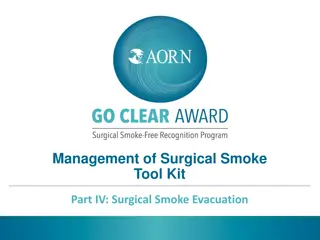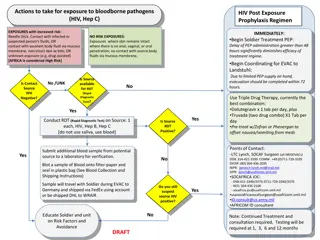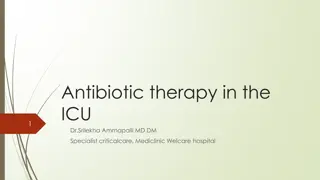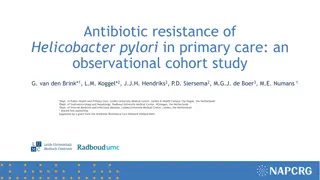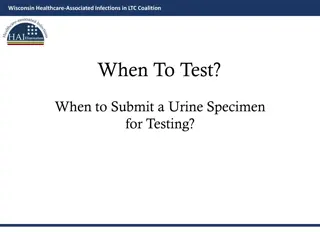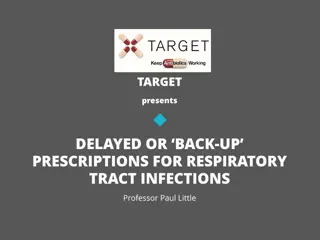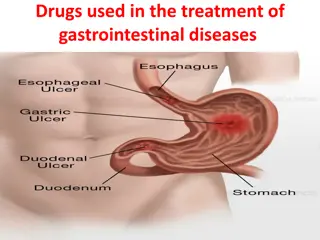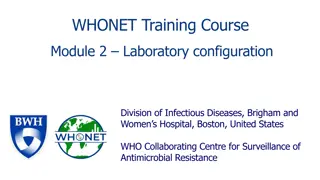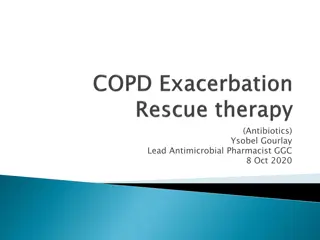Antibiotic Prophylaxis in Perioperative Care
Explore the rational approach to perioperative antibiotic use, the importance of antibiotic stewardship in the operating room, and guidelines for selecting and administering antibiotics to prevent surgical site infections. Understand when antibiotic prophylaxis is necessary, which antibiotics to use, dosing, timing, and duration considerations for optimal outcomes. Learn about common pathogens, appropriate agents, and strategies for antimicrobial stewardship to minimize adverse events and resistance.
- Antibiotic Prophylaxis
- Perioperative Care
- Surgical Site Infections
- Antibiotic Stewardship
- Common Pathogens
Download Presentation

Please find below an Image/Link to download the presentation.
The content on the website is provided AS IS for your information and personal use only. It may not be sold, licensed, or shared on other websites without obtaining consent from the author. Download presentation by click this link. If you encounter any issues during the download, it is possible that the publisher has removed the file from their server.
E N D
Presentation Transcript
Antibiotic Prophylaxis Mark Downing Infectious Diseases Antimicrobial Stewardship Saint Joseph s Health Centre
Objectives Rational approach to perioperative antibiotics Antibiotics needed at all? Which Antibiotic? Penicillin Allergy Timing Dosing Duration Staph aureus decolonization
Why Antibiotic Stewardship Matters in the OR Adjunct to source control Minimize Adverse Events Surgical Site Infections Clostridium difficile Allergic reactions Decrease antimicrobial resistance, cost at the institution level
The Ideal Peri-operative antibiotic Active against pathogens most likely to contaminate surgical site Appropriate dosage for patient Given at appropriate time to ensure adequate tissue levels at time of potential contamination Safe Administered for shortest effect period to minimize adverse events, resistance, cost
Antibiotic Prophylaxis Needed? Already contaminated Should be on treatment anyways Clean-contaminated Yes, for the most part Laproscopic cholecystectomy in low risk patient: not needed Clean procedures Sometimes, if severe consequences of infection Prostheses
Objectives Rational approach to perioperative antibiotics Antibiotics needed at all? Which Antibiotic? Timing Dosing Duration Staph aureus decolonization
Deciding on an Antibiotic: Common Pathogens Clean Procedures Skin flora: Staph, Strep species (Gram positives) Clean-contaminated Skin flora, Gram negatives (eg. E.coli), Enterococcus, Anaerobes Most reliable agents for gram positive organisms are Cefazolin, Clindamycin and Vancomycin
Common Perioperative Antibiotics Cefazolin The Work Horse Active against most skin flora and some gram neg Relatively narrow spectrum Does not cover MRSA ?Cross reaction with penicillin allergy
Common Perioperative Antibiotics: Alternatives Clindamycin Increased resistance for Staph and Strep (20-30%) Very high risk of C.diff No gram negative coverage Some MRSA coverage Vancomycin Reliably covers MRSA Prolonged infusion time Red Man Syndrome Bacteriostatic No gram negative coverage
Vancomycin: Indications Not recommended for routine use in any procedure Patient MRSA colonized Cluster of MRSA cases detected at institution (True B-lactam allergy)
Vanco Less Effective than Ancef Ann Surg. 2012 Dec;256(6):1089-92.
Vancomycin: Red Man Syndrome Rate related infusion reaction to Vancomycin Direct activation of mast cells Not an allergy Causes Rash, Pruritis, Pain, Hypotension May be worsened by opiods, muscle relaxants Infuse at a rate of <10 mg/min to avoid May premedicate with Benadryl if high risk
Patient has a penicillin allergy: Can they still have Ancef? JAMA. 2001 May 16;285(19):2498-505.
What type of allergy? Type I: <72 hours, usually <1 hour IgE mediated: anaphylaxis, wheezing, angioedema, urticaria Type II, III, IV: Usually >72 hours Serum Sickness Hemolysis Contact dermatitis, Stevens Johnson Syndrome Idiopathic: >72 hours Maculopapular rash
Cephalosporins Penicillin Ceftriaxone B-lactam Ring Cefazolin
Cross-Reactivity Traditionally cross reactivity 10% with cephalosporins Penicillin allergic pts 3x more likely to react to any drug Allergy was loosely defined In 70s cephalosporins were produced by mold which contained trace amounts of penicillin
Does This Patient Have A Penicillin Allergy? Age at time of reaction Does the patient remember it? How long after beginning penicillin did reaction occur? Why was it given? What other meds was the patient taking? Has the patient taken antibiotics similar to penicillin? If so what happened?
Penicillin Skin Testing Use is only for patients with history suspicious for Type I allergy Of these if skin test negative only 1.4% will have a Type I reaction to penicillin Reactions were only urticaria and other mild skin ?Reliable cephalosporin skin testing
Approach to Penicillin Allergy History Suspicious for Type I Give Cephalosporin No Yes Skin Testing Negative Give Cephalosporin Positive Desensitize
Choosing an antibiotic: Summary Cefazolin is great Is there a really good reason not to use it? Clinda causes C.diff, unreliable coverage Vanco is useful for MRSA, true penicillin allergy Most patients don t have a true penicillin allergy and can safely be given Cefazolin History is key
Objectives Rational approach to perioperative antibiotics Antibiotics needed at all? Which Antibiotic? Timing Dosing Duration Staph aureus decolonization
Timing Minimum Inhibitory Concentration (MIC) = Amount of drug needed to prevent organism from growing Need to make sure antibiotic levels are above the MIC throughout procedure
Placebo + Live Staph Aureus Penicillin + Staph aureus Dead Staph aureus
Multiple dose antibiotics for long procedures
Dosing Weight based dosing and Cefazolin 1 gram <80 kg 2 grams for >80 kg 3 grams for >120 kg Clindamycin 900 mg Vancomycin 15 mg/kg 1 gram < 90 kg (60 min infusion) 1.5 grams 90-110 kg (90 min infusion) 2 grams for >110 kg (2h infusion)
Duration of Antimicrobial Prophylaxis Should be <24 hours for most procedures Generally very little evidence to support any post-operative prophylaxis 7 Studies evaluating single dose vs 1-4 day prophylaxis for cardiothoracic procedures No reduction in SSI
Observational study >48h vs <48h of antibiotic prophylaxis Prolonged antibiotics not associated with decreased SSI in multi-variate analysis Prolonged antibiotics associated with increased acquisition of resistant organisms (OR 1.6)
Objectives Rational approach to perioperative antibiotics Antibiotics needed at all? Which Antibiotic? Timing Dosing Duration Staph aureus decolonization
Staph aureus Staph aureus can colonize nares, skin 20-30% of patients are Staph aureus nasal carriers ~15% of our Staph aureus is MRSA 2-14x risk of SSI
Double Blind RCT intranasal mupirocin for elective/nonemergent surgery 3864 patients randomized No difference in SSI between groups overall 50% reduction in SSI with Staph aureus in patients colonized with Staph aureus
Multi-centre RCT double blind study for medicine and surgical patients colonized with Staph aureus Intranasal mupirocin + chlorhexidine bath x 5 days Staph aureus hospital infection RR 0.42 Hospitalization shorter by 2 days
Staph aureus decolonization Reasonable to screen patients at high risk for SSI Cardiac Surgery Orthopedic Surgery (General Surgery?) Does not matter whether its MSSA/MRSA If patient has Staph aureus Give Mupirocin 2% to both nares BID x >5 days + Chlorhexidine bath daily x >5 days
Antibiotic Prophylaxis for Common Surgical Procedures Cardiac Surgery Single dose of Ancef with appropriate intra- operative redosing No evidence supporting durations >24h for abx regardless of whether drains in place Vancomycin or Clinda for Pen allergy Vancomycin for MRSA colonization
Antibiotic Prophylaxis for Common Surgical Procedures Thoracics Single dose of Ancef Vanco/Clinda for Pen Allergy Vanco for MRSA colonization If high rate of Gram negative SSI need to add gram neg coverage to vanco or Clinda No evidence for post-op prophylaxis >24 h
Antibiotic Prophylaxis for Common Surgical Procedures General Surgery Single dose of Ancef for Upper GI and Biliary procedures Low risk Lap Cholecystectomy: no prophylaxis Lower GI: Ancef + Flagyl No post-operative prophylaxis generally needed
Antibiotic Prophylaxis for Common Surgical Procedures Neurosurgery Clean: Ancef x <48 hours Orthopedics Joint repair and replacements Ancef <24h
Antibiotic Prophylaxis for Common Surgical Procedures Cystoscopy None for clean procedures with no RF for infection Treat pre-op positive urine cultures with appropriate agent Clean procedures with instrumentation: Cefazolin, Fluoroquinolone, Septra
Surgical Antibiotic Prophylaxis Summary Cefazolin is great, Clinda and Vanco are not Most patients with penicillin allergies do not have true allergies Antibiotics should be given 30-60 min before incision (except for Vanco) No evidence to support post-op antibiotic prophylaxis in most settings Staph aureus screening and decolonization useful in select high risk procedures
